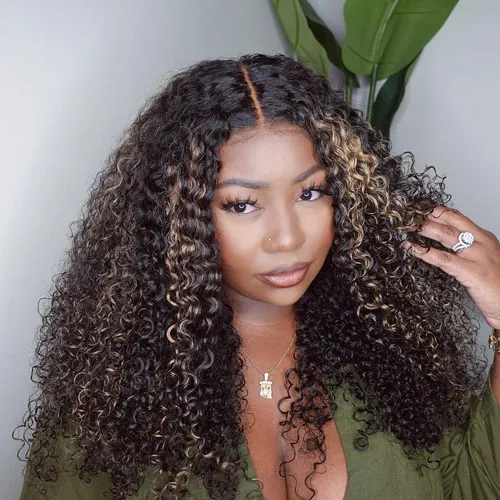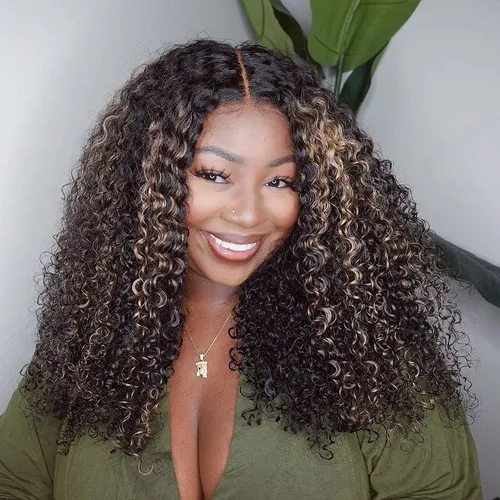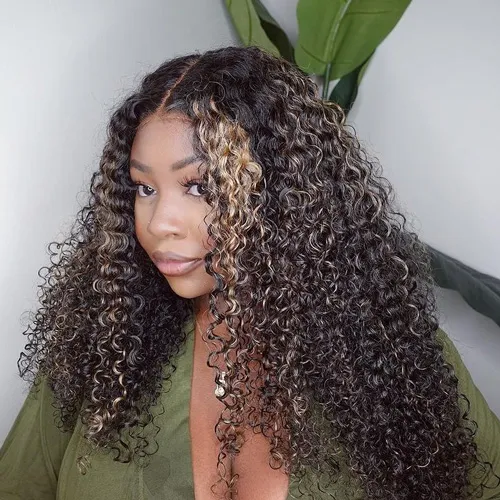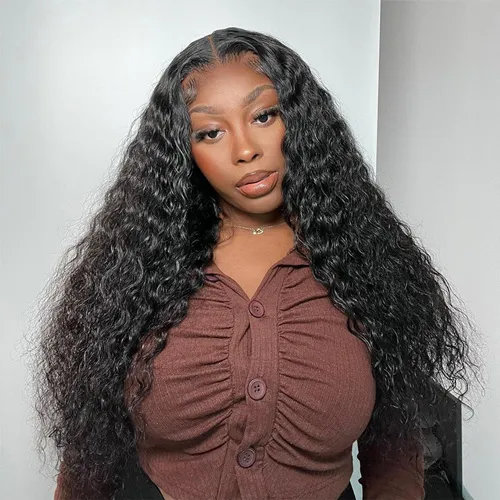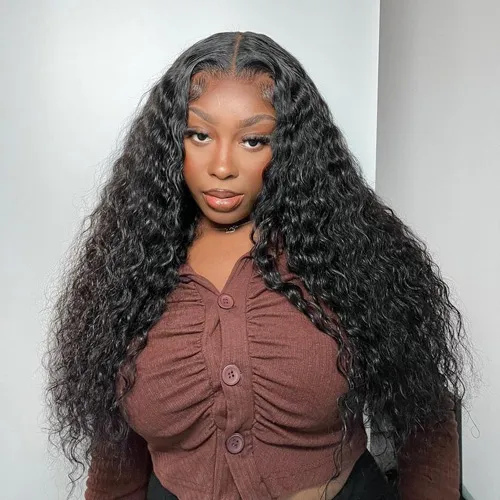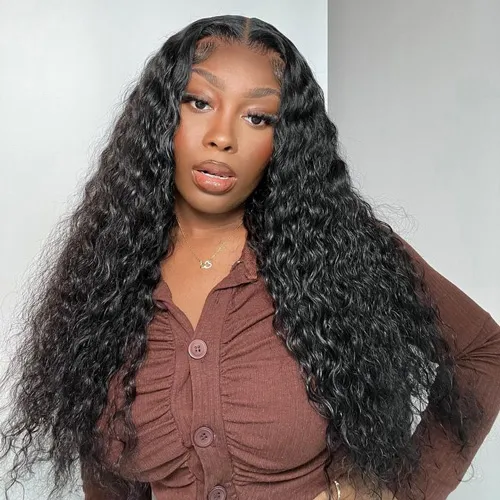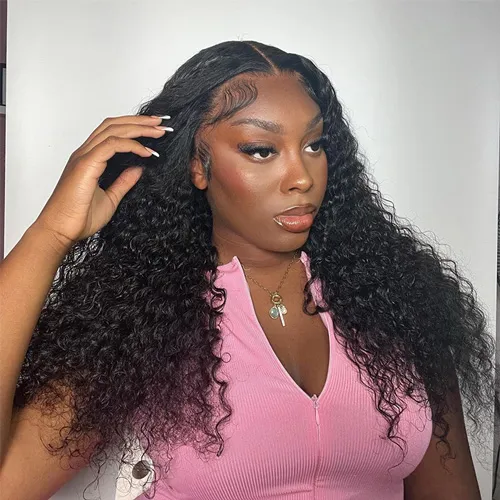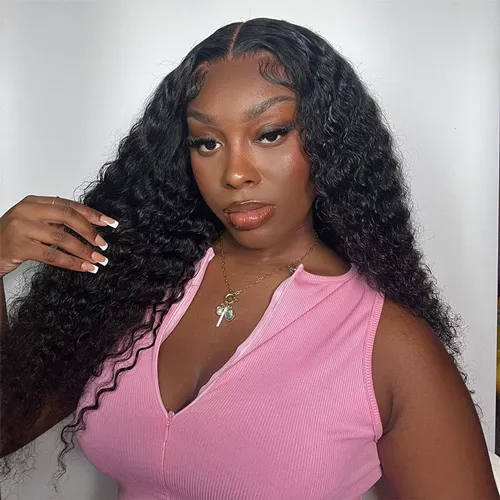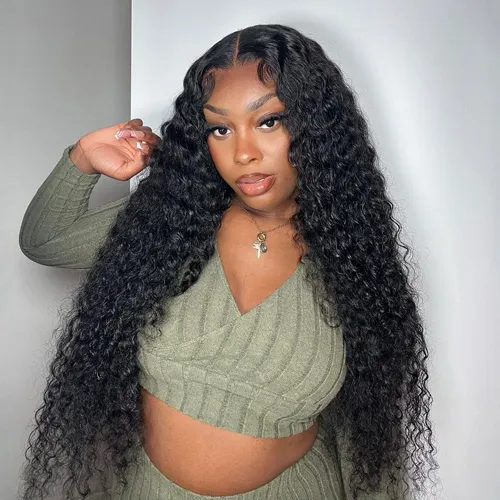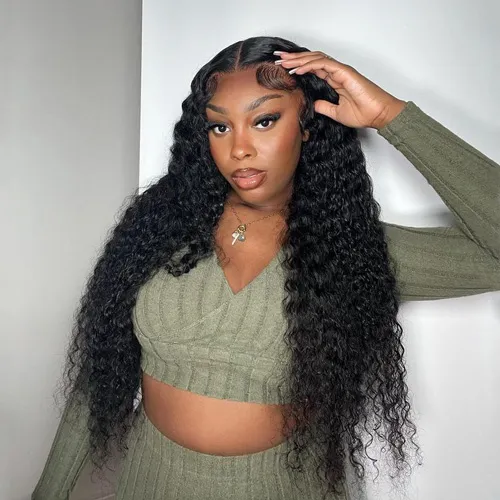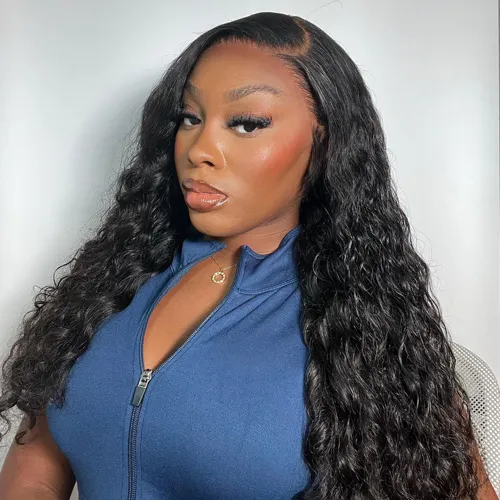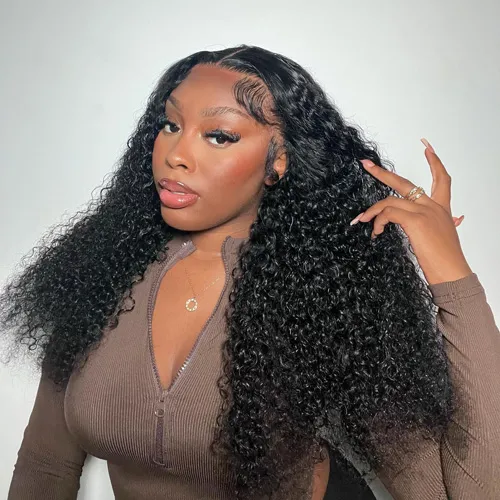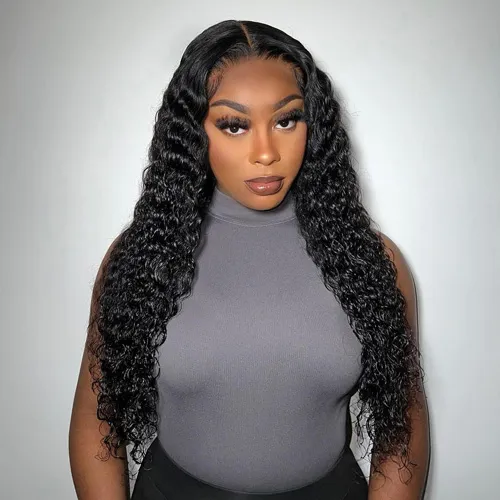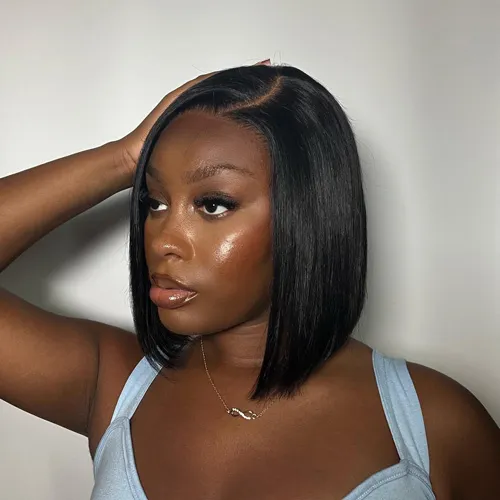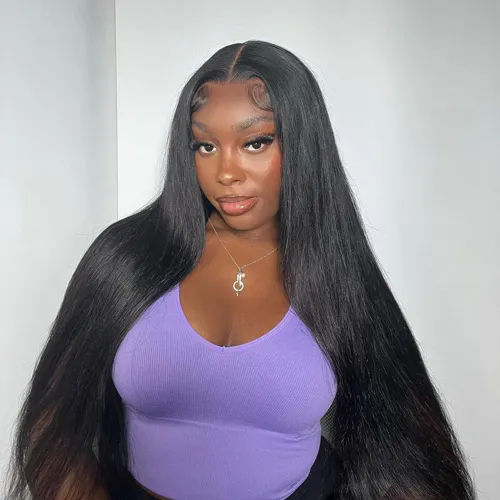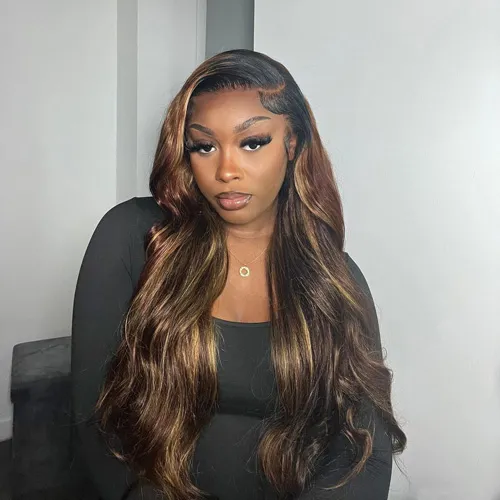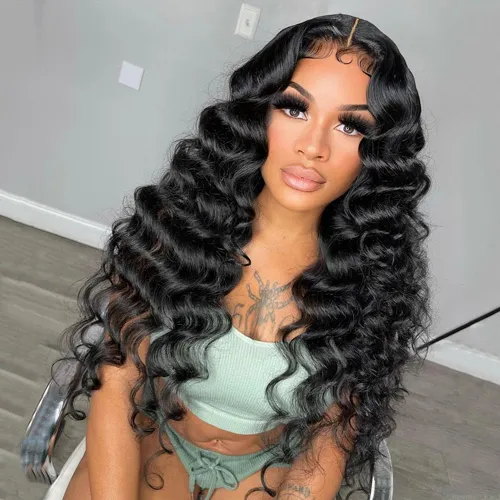The water wave wig stands out for its natural, effortless, and wavy appearance. In this comprehensive guide, we will delve into the world of water wave wigs, exploring styling techniques, maintenance tips, and everything you need to know to keep your wig looking fabulous.
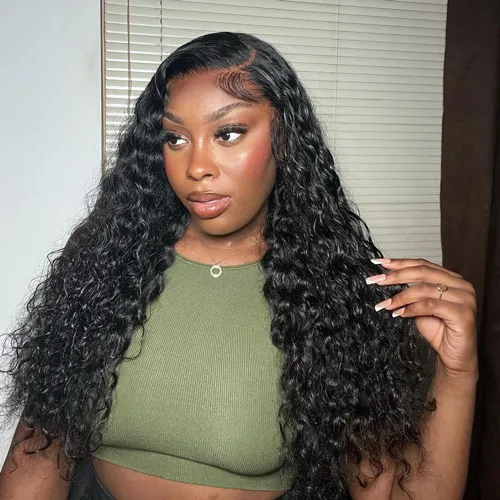
Types of water wave wigs.
Brazilian water wave wig: Known for its soft and luxurious texture, Brazilian water wave wigs are popular for their versatility and natural look. The waves are bouncy and maintain their shape well.
Peruvian water wave wig: Peruvian hair is known for its thickness and durability. A Peruvian water wave wig offers a fuller appearance, making it a great option for those who prefer more volume in their hairstyles.
Malaysian water wave wig: Malaysian hair is lightweight and silky, providing a smooth and sleek finish. Malaysian water wave wigs are perfect for those who want a natural look with minimal maintenance.
Indian water wave wig: Indian hair is often fine and silky, making Indian water wave wigs a great choice for those who want a soft and flowing look. These wigs are also known for their natural shine.
Styling your water wave wig.
Styling a water wave wig can be a delightful and creative process, allowing you to experiment with different looks while embracing the natural, effortless waves. Whether you’re new to wigs or a seasoned wig wearer, here’s a comprehensive guide on how to style your water wave wig to achieve various looks for different occasions.
1. Basic styling tools.
Before delving into specific styling techniques, it’s essential to gather the right tools:
Wide-tooth comb: Use a wide-tooth comb to gently detangle the wig, starting from the tips and working your way up to the roots.
Water spray bottle: A water spray bottle helps dampen the hair slightly, making it more manageable for styling.
Styling products: Choose products that enhance the natural texture of the waves without weighing them down. Options include mousse, curl enhancers, or texture sprays.
Heat protectant: If you plan to use heat styling tools, apply a heat protectant to prevent damage to the hair.
Hairdryer with a diffuser attachment: A diffuser helps distribute air evenly, promoting natural wave formation without causing frizz.
Hairpins and hair ties: These are useful for securing sections of hair during styling.
2. Everyday casual waves.
Steps:
Start with a detangled wig:
Use a wide-tooth comb to gently detangle the hair, starting from the tips and working your way up to the roots.
Dampen the hair:
Lightly mist the wig with water using a spray bottle to create a slightly damp base for styling.
Apply styling product:
Apply a small amount of styling product (such as mousse or curl enhancer) to enhance the natural waves. Distribute the product evenly throughout the hair.
Scrunch and air dry:
Scrunch sections of the hair with your hands to encourage the formation of natural waves.
Allow the wig to air dry to maintain the integrity of the waves.
3. Glamorous beach waves.
Steps:
Prep the wig:
Detangle the wig with a wide-tooth comb and ensure it’s dry and ready for styling.
Create loose waves:
Use a curling wand or iron with a large barrel to create loose waves. Wrap sections of hair around the wand, holding for a few seconds before releasing.
Finger comb the waves:
After curling, gently finger comb the waves to loosen them for a more relaxed, beachy look.
Set with hairspray:
Lightly mist the waves with a flexible-hold hairspray to set the style.
4. Half-up half-down style.
Steps:
Part the hair:
Create a part on one side of the wig, allowing some loose waves to frame your face.
Gather the top section:
Gather the top section of the hair, leaving some loose waves around the face.
Secure with a hair tie or clip:
Secure the gathered section with a hair tie or clip, creating a half-up, half-down style.
Enhance waves:
Use a wide-tooth comb to enhance the waves in the loose section, ensuring a natural and blended look.
5. Braided crown style.
Steps:
Divide the hair:
Divide the wig into two sections, creating a part down the middle.
Create two braids:
Braid each section of hair, starting from the front and working towards the back.
Wrap braids around the crown:
Wrap each braid around the crown of your head, securing them with bobby pins to create a braided crown.
Loosen braids for volume:
Gently pull on the sides of the braids to loosen them, adding volume and creating a more relaxed appearance.
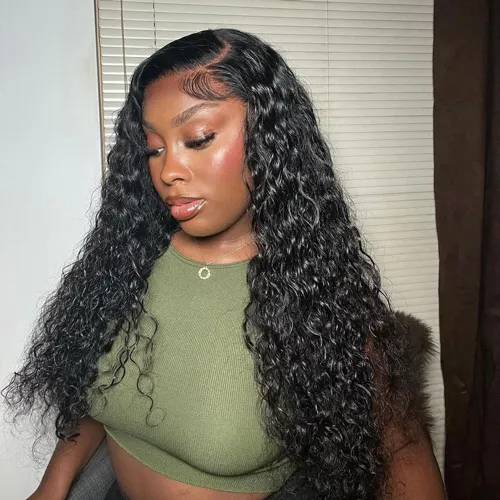
Washing and conditioning your water wave wig.
1. Frequency of washing:
Wash your water wave wig every 2-4 weeks or as needed. Overwashing can strip the hair of its natural oils, leading to dryness.
2. Cold water rinse:
Rinse the wig with cold water. Hot water can cause the waves to loosen over time. The cold water helps maintain the integrity of the waves.
3. Sulfate-free shampoo and conditioner:
Use a sulfate-free shampoo and conditioner to clean and moisturize the hair without causing damage to the waves.
4. Deep conditioning:
Deep condition your water wave wig regularly to keep the hair hydrated. Apply a generous amount of deep conditioner, focusing on the mid-lengths and ends, and leave it on for the recommended time.
5. Detangling:
Use a wide-tooth comb to detangle the hair gently, starting from the tips and working your way up to the roots. Wet the hair slightly to make detangling easier.
Drying your water wave wig.
1. Air drying:
Whenever possible, allow your water wave wig to air dry. This helps maintain the natural wave pattern and prevents unnecessary heat damage.
2. Pat dry with a towel:
Pat the wig dry with a soft towel instead of rubbing it vigorously. Rubbing can cause frizz and disrupt the natural wave pattern.
3. Avoid excessive heat:
If you need to use a hairdryer, choose a low heat setting and attach a diffuser to distribute the air evenly, promoting natural wave formation.
Storage and maintenance tips.
1. Wig stand or mannequin head:
Store your water wave wig on a wig stand or mannequin head when not in use. This helps maintain its shape and prevents tangling.
2. Protective cover:
Store your wig in a protective cover or a silk/satin bag to prevent dust and tangling. Avoid storing it in direct sunlight to prevent color fading.
3. Avoid high temperatures:
Keep your wig away from high temperatures, such as heaters and direct sunlight, as excessive heat can damage the fibers.
4. Prevent friction:
Minimize friction by avoiding contact with rough surfaces. When wearing the wig, be mindful of clothing collars and accessories that may rub against the hair.
Additional tips for long-term care.
1. Regular inspections:
Inspect your water wave wig regularly for any signs of damage, such as split ends or fraying. Trim any damaged areas to prevent further issues.
2. Protective styling:
When not wearing your wig, consider putting it in protective styles such as braids or twists to prevent tangling.
3. Avoid sleeping with wet hair:
Ensure your water wave wig is completely dry before going to bed to prevent tangling and matting.
Problem you may encounter when the daily use of water wave wig.
While water wave wigs can offer a stunning and natural look, daily use may come with a set of challenges. Understanding the potential problems you might encounter and knowing how to address them is essential for maintaining the longevity and beauty of your water wave wig. Here are some common issues you may face with daily use and how to overcome them:
1. Dryness:
Cause:
Overwashing, using harsh products, and exposure to environmental factors can lead to dryness in water wave wigs.
Solution:
Limit washing to once every 2-4 weeks to prevent stripping the hair of its natural oils.
Use sulfate-free shampoos and conditioners to maintain the hair’s moisture.
Deep condition the wig regularly to keep it hydrated.
2. Color Fading:
Cause:
Prolonged exposure to sunlight and harsh chemicals in hair products can cause the color of the wig to fade over time.
Solution:
Store the wig away from direct sunlight when not in use.
Use color-protecting products to minimize color fading.
Consider wearing a hat or using a protective spray when exposed to the sun for extended periods.
3. Tangling and Matting:
Cause:
Daily friction, exposure to the elements, and improper care can lead to tangling and matting of water wave wigs.
Solution:
Detangle the wig gently using a wide-tooth comb, starting from the tips and working your way up to the roots.
Use a detangling spray or conditioner to ease the process.
Consider putting the wig in protective styles such as loose braids or twists when not in use to minimize friction.
4. Loosening of Waves:
Cause:
Excessive heat styling, frequent washing, and using hot water can cause the natural waves of the wig to loosen.
Solution:
Limit the use of heat styling tools or use them on low heat settings.
Rinse the wig with cold water to help maintain the wave pattern.
Allow the wig to air dry whenever possible.
5. Shedding:
Cause:
Poor quality wigs, overprocessing, or aggressive handling can lead to excessive shedding.
Solution:
Invest in high-quality water wave wigs from reputable suppliers.
Handle the wig with care, avoiding aggressive combing or brushing.
If shedding persists, consult with a professional stylist for an assessment.
6. Frizz:
Cause:
Exposure to humidity, rough handling, or lack of proper conditioning can contribute to frizz in water wave wigs.
Solution:
Apply a small amount of leave-in conditioner or hair oil to the frizzy areas to smooth out the hair.
Use anti-frizz products or serums specifically designed for wigs.
Avoid excessive touching and rubbing of the hair to minimize friction.
7. Lace Damage:
Cause:
Rough handling, improper removal, or cleaning can damage the lace front or full lace of the wig.
Solution:
Gently remove the wig using adhesive remover or water, following proper removal techniques.
Clean the lace carefully without pulling or stretching it.
Consider professional maintenance for lace repair if damage occurs.
8. Odor:
Cause:
Accumulation of sweat, product residue, or exposure to odorous environments.
Solution:
Wash the wig regularly using a gentle shampoo and conditioner. Allow it to air dry thoroughly to prevent musty odors. Store the wig in a well-ventilated area.
9. Style loss:
Cause:
Continuous styling, excessive heat, and lack of proper care can lead to a loss of the natural wave pattern.
Solution:
Limit heat styling and opt for heat-free styling methods whenever possible. Follow the recommended care routine, including washing, conditioning, and air-drying, to maintain the wig’s original style.
That’s all.
Proper styling and maintenance ensure a beautiful and durable water wave wig. Whether you’re new to wigs or experienced, this guide offers valuable insights for maximizing your wig experience.
